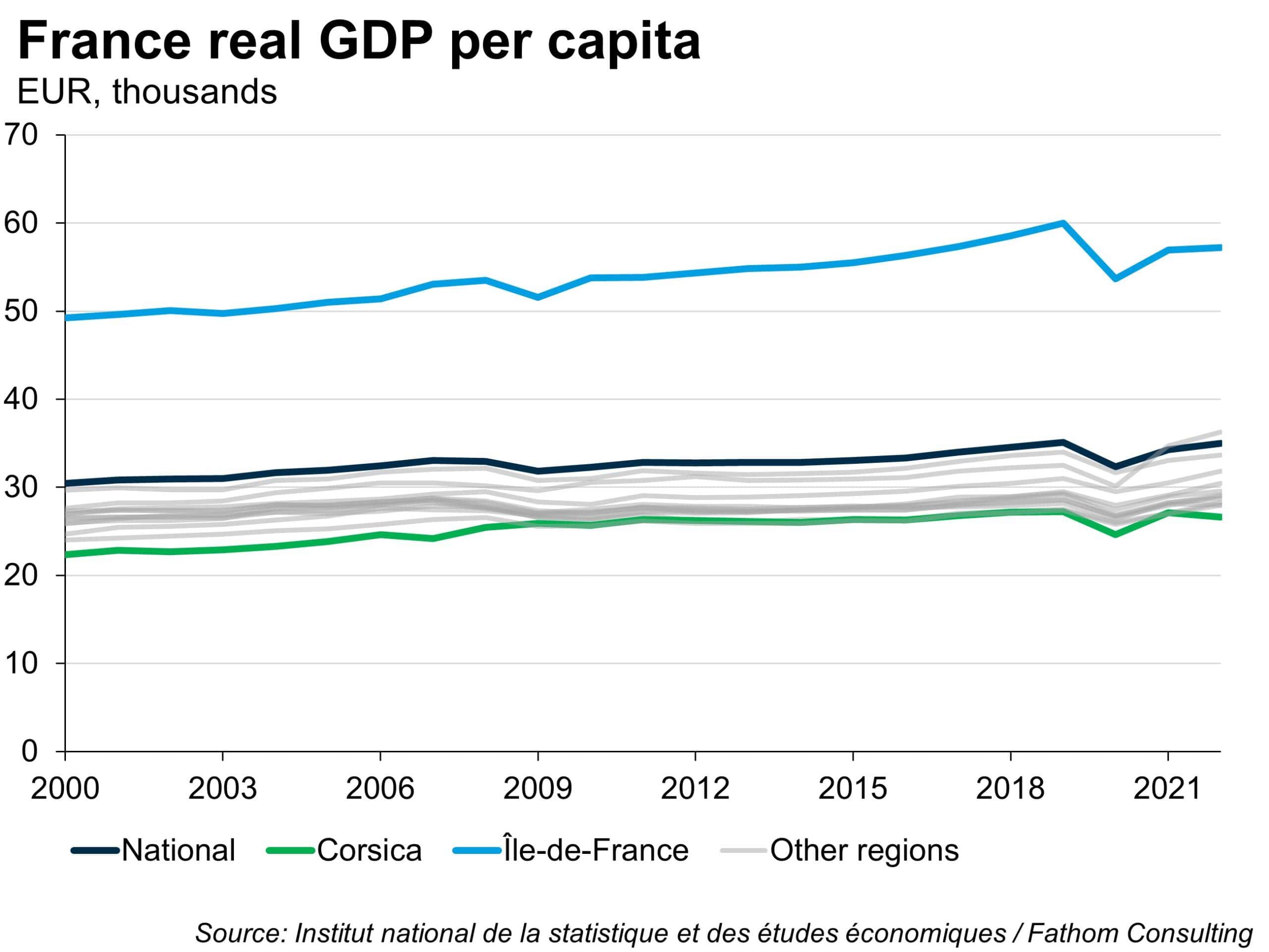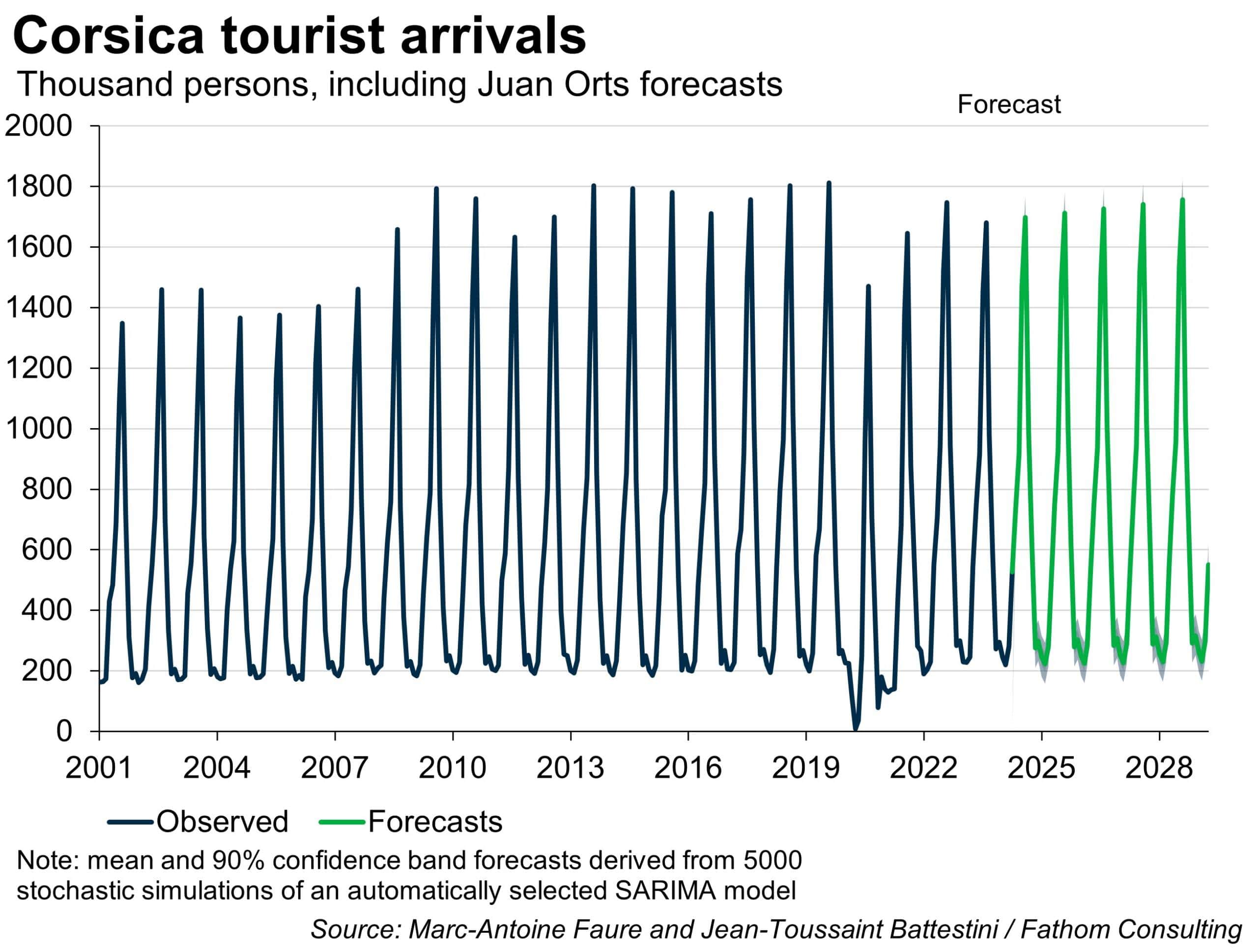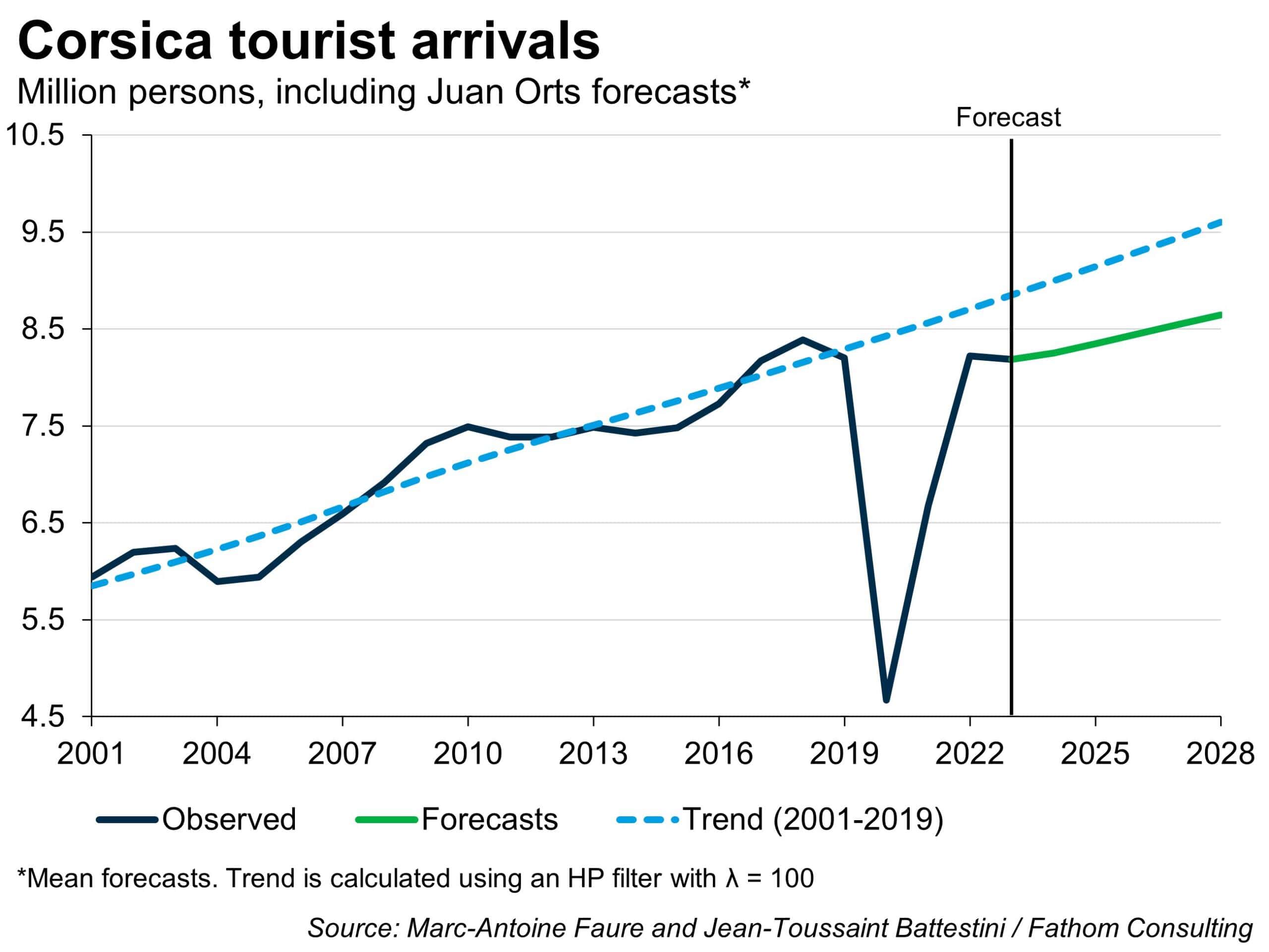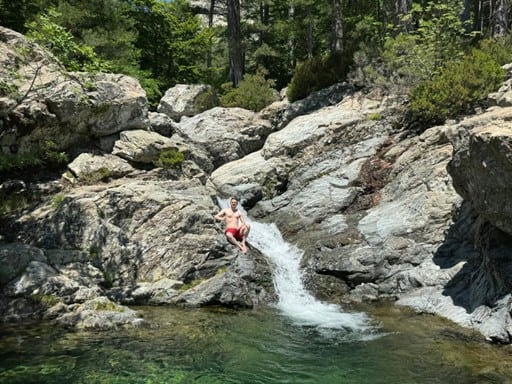A sideways look at economics
The invitation from my dear friend Arnaud — tireless partner during my Poland adventures — to his second residence in Corsica was too good to be rejected. Not only because I really needed a vacation after some turbulent weeks personally, but also due to the irresistible appeal of visiting a place that, although close geographically, was a total mystery to me. So, here I am to report the outcome of this extremely pleasant trip. Trust me: you are gonna like it.
It seems like us Europeans ignore Corsica. Anchored in the Mediterranean, between France and Italy, this island goes unnoticed, and is overshadowed by classic holiday destinations in Italy, Spain or Greece. Away from mass tourism, “the most sublime”, as the ancient Greeks called it, does not skimp on beauty or wild nature. With landscapes that range from high mountains to paradisiacal coves, rugged cliffs or picture-postcard towns, the island where Napoleon was born is, I think, the best kept secret when it comes to summer vacations in Europe.
As an interesting historical background, this island belonged to the Italian Republic of Genoa until 1768, when it was sold to France to repay debts. French King Louis XV annexed Corsica one year later, 1769, which was the very same year in which Napoleon was born. So, that means Napoleon almost turned out to be an Italian! That and many other interesting facts can be discovered when you visit the ‘Maison Bonaparte’, the original house in which Napoleon spent his childhood, which is located in Ajaccio, the capital of the island. There are also other beautiful cities to visit, such as Bonifacio (built on a cliff right on the southern tip of the island), Bastia, Porto Vecchio (the ‘posh’ city) and Calvi. However, the tricky thing is that these cities are all spread around in different parts of the island coast, which means that you need to spend quite a lot of time driving to visit them all. This is because, despite the distance between these places not being too far in terms of kilometres, it usually involves making your way through the vast number of mountains that abound, along roads that are rather narrow and curvy. For example, when we drove from Ajaccio to Bonifacio, it took us more than two and a half hours to travel just 130 kilometres. However, the ride was absolutely beautiful and we had a lot of fun, especially when some of these crazy curves (or ‘snakes’, as we called them) appeared in front of us.
Corsica is France, but in many aspects, it doesn’t seem like it. Leaving aside the political questions (a large part of the population does not feel French and they actually hate Napoleon), I did feel like this island has its own character. I found that the people of Corsica are super kind (perhaps, even more than what you could expect from an average mainland French person), they have their own language (the ‘corse’, which reminded me a bit of Italian), traditions and really beautiful music, such as the song Chì Fà by the famous local singer Francine Massiani. Finally, the highly safe environment that can be felt over there sits in sharp contrast with the growing insecurity of mainland France. Corsica is definitely different!
In terms of its economy, it turns out that, sadly, Corsica is the poorest region in France, with a real GDP per capita of just 27,000 euros, in contrast with the national average of 35,000 and the richest region (‘Île-de-France’, where Paris is located) with 57,000 euros. The economic structure has not really changed much since statistics began in 2001, with Corsicans primarily engaged in activities related to the public administration (e.g., education, health), wholesale and retail trade, construction and tourism-related services such as accommodation or food. Many of these sectors are indeed directly and indirectly affected by tourism, so we could assert that it plays a key role in the economy of the island.

Given this dismal reality, you may have concluded that it must be very affordable to spend your summer holidays there. Trust me, you are very wrong. Before going, I was counting my chickens before they hatched, thinking that with my London salary I could go on a splurge, only to find out that everywhere I went, the price of a pint was EUR 8, a meal around EUR 40 and cocktails for EUR 15. These are London prices! Definitely not fair…
Continuing the bad news, when doing research for this TFiF, I found out that the economic outlook of our dear island has worsened off lately. Corsica usually receives around eight million visitors a year, mainly concentrated in July and August, with the vast majority of them being from France itself. However, over the past couple of years the number of visitors has shrunk significantly, the reason for this slack has mainly being credited to the impact of inflation and the sharp increase in the cost of the main expenses one has to go through to arrive on the island: the ferry from mainland Europe (or flights, most of them with the regional airline) and car hire, as well as of course accommodation. As a consequence, Corsica has found itself overlooked cost-wise compared to its other more affordable Mediterranean neighbours.
At this point, it is natural to ask yourself whether this trend will continue. And as an economist that I am, I could not resist at giving a go at forecasting the number of visitors that the island is likely to experience over the coming years. However, I faced a massive difficulty when trying to get hold of the data. It turns out that the official data for tourist arrivals to Corsica does not exist in a comprehensive and easy to download dataset, but rather one has to go one-by-one through a total of 280 PDF files (23 years of data times 12 months in each year, plus a few months for 2024) and copy the data manually. Honestly, I really cannot believe that these things still happen nowadays… So, before we continue, I would like to give a slap on the wrist to DREAL, the “Direction Régionale de l’Environnement de l’Aménagement et du Logement” of Corsica for not doing things properly!
Anyway, now that I have let off steam, let’s continue. Obviously, with this insurmountable impediment all seemed lost, because I was obviously not willing to undertake such a sizable manual task that would have taken me days to complete. However, I was very lucky to find by chance a very recent paper[1] published by researchers from the University of Paris Nanterre in which they develop a forecasting framework for tourism demand in Corsica, and… voilà! It turns out that they had collected the data manually for their paper. I emailed them and they kindly sent me the dataset to aid this TFiF, so a big applause and thanks to them.
The series I will be forecasting is monthly arrivals to Corsica by air and by sea (total numbers, so it includes both French and international tourists). As with many tourism-related series, the data shows a very strong ‘seasonal’ pattern, meaning that the number of visits to the island is significantly higher each and every year during the summer, relative to the rest of the year. That means we need to find a methodology that can properly account for this issue, in this case I will be using the so called ‘SARIMA’ model, which stands for ‘Seasonal Autoregressive Integrated Moving Average’. The name may sound scary, but it is actually the simplest type of time series model that exists out there![2] So, by choosing this model, I am keeping the methodology very simple as this is a TFiF, but for a comprehensive treatment of the topic, please refer to the paper above. Without further ado, the chart below shows my predictions for the number of tourists that we can expect to arrive to Corsica over the coming five years.

Finally, to answer our question of whether Corsica tourism will return to pre-COVID normality, the first thing that we need to do is to aggregate the monthly forecasts to annual in order to remove the seasonality. Then, I estimate a trend for the 2001-2019 period and project it forward, up to the end of the forecast horizon. What that gives me is, approximately, the expected number of tourists that Corsica would have received each year in the absence of COVID and the subsequent inflationary shock. I can then compare this trend level with my model forecasts to best derive our answer.
According to this model, as you can see in the chart below, the number of tourist visiting Corsica will continue to recover, however this process is expected to be very slow and, unfortunately, the island will not be able to catch up with the pre-COVID trend at any point in the forecast horizon. A reasonable explanation for this is that the post-COVID inflationary shock, which resulted in a significant jump in the price level, will continue to deter tourists from coming into Corsica.

We have now come to the end of this TFiF… what a ride! You should congratulate yourself for making it this far. I know I haven’t been short this time around, but was just so amazed by the beauty of this island that I could not resist giving it the tribute it deserves. However, note that it is not only the places you visit what make a trip so special, but also the people who accompany you along the way. And I could not be luckier to have spent this trip with my wonderful friends Arnaud (special mention as he has been an amazing host) and Alfonso. We have already made plans to return next year, with many new activities in the pipeline. I invite you to do the same, so that we can all turn things around and get the tourism of this island back on track. And if that happens, I will be genuinely happy for having got my forecast wrong!

[1] Battestini and Faure, ‘The Summer’s Call: A Forecasting Framework for Tourism Demand in Corsica’, 2024.
[2] Specifically, what this model does is acknowledge that the previous values of the variable can help predict where those values are today and it combines these with a correction for past prediction errors to smooth out any sudden spikes or dips.
More by this author
Labour market’s impossible trinity
What is a professional economist?